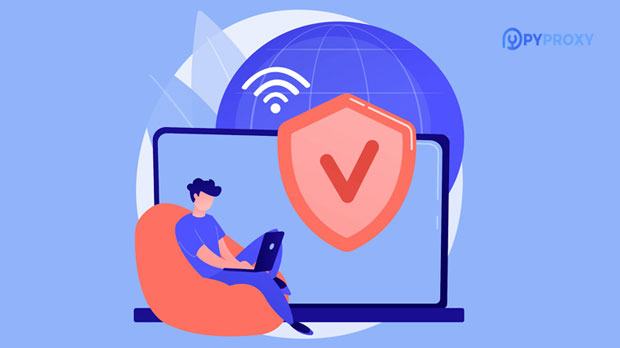The process of automatically updating free residential socks5 proxy lists is crucial for maintaining seamless internet access, ensuring privacy, and enhancing security. In an environment where proxies are essential for activities like web scraping, online anonymity, and bypassing geo-restrictions, staying up-to-date with working proxy addresses is critical. Free residential socks5 proxies, unlike datacenter proxies, offer IP addresses that belong to real residential devices, making them harder to block or detect. However, they can become outdated or blocked frequently, so automating their update process can save time and improve efficiency for users. This article will explore effective strategies to automatically update free residential SOCKS5 proxy lists, covering technical aspects and tools that help in automating the process. Understanding Residential SOCKS5 ProxiesResidential SOCKS5 proxies refer to IP addresses assigned to real residential devices rather than data centers or virtual machines. These proxies provide enhanced anonymity as they appear to originate from regular homes or businesses, making them harder to detect by websites, services, or anti-bot measures. Since these proxies leverage real Internet Service Providers (ISPs), they also offer better geo-targeting and are less likely to be blacklisted.SOCKS5, specifically, is a versatile proxy protocol that supports a range of network protocols and allows for efficient and secure communication between a client and a server. It provides features like encryption, authentication, and a flexible configuration, making it an ideal choice for various tasks like anonymous browsing, circumventing firewalls, or conducting research while keeping the user's identity hidden.However, the free residential SOCKS5 proxies available on the internet are often unreliable. These proxies may become non-functional due to IP bans, server downtime, or network inconsistencies. This necessitates the automatic updating of proxy lists to ensure continuous and uninterrupted use.The Need for Automatic Updates of Proxy ListsManual updating of proxy lists can be time-consuming and inefficient. Free residential SOCKS5 proxies are typically shared resources and can become unusable within a short period. They are often flagged by websites due to misuse or high traffic from the same IP addresses, causing them to be blocked or flagged as suspicious.Therefore, it is essential to automate the process of obtaining new proxy lists and replacing the old ones to ensure a constant supply of functional proxies. Here are some reasons why automatic updates are necessary:1. Speed and Efficiency: Automatically updating the proxy list saves time by eliminating the need for manual intervention.2. Avoiding Detection and Blocks: Proxies can get blocked after a certain number of requests, so regularly updating the list helps maintain anonymity and access to geo-restricted content.3. Improved Performance: An up-to-date proxy list will include fresh proxies that are faster and more stable than outdated ones.4. Continuous Access: With an automated system, users can ensure they always have available proxies for their operations, reducing downtime or interruptions.Methods for Automating Proxy List UpdatesSeveral methods can be used to automate the process of updating free residential SOCKS5 proxy lists. The most effective solutions often combine web scraping, API integration, and scheduling tools to ensure that fresh proxies are always available. Below are some approaches:1. Web ScrapingWeb scraping is the process of extracting data from websites automatically. Many websites offer free proxy lists that can be scraped for new SOCKS5 proxies. To automate the update of a proxy list using web scraping, the following steps can be taken:- Identify Reliable Sources: First, find websites that consistently publish up-to-date lists of free residential SOCKS5 proxies. These sources should be trustworthy and regularly update their data.- Create a Scraping Script: Using programming languages like Python, a web scraping script can be written to extract proxies from these websites. Libraries like BeautifulSoup and Scrapy are commonly used for this purpose.- Schedule the Script: Once the script is developed, it can be scheduled to run periodically using task scheduling tools like cron (for Linux-based systems) or Task Scheduler (for Windows). This ensures that the proxy list is updated automatically at regular intervals.The advantage of using web scraping is that it allows for the customization of the data extraction process. However, it also requires technical expertise in scripting and website analysis.2. Proxy Aggregator APIsSome services offer APIs that provide regularly updated proxy lists, including free residential SOCKS5 proxies. These APIs are designed to make the process of obtaining proxies seamless and automated. By integrating an API into your system, the proxy list can be updated in real-time without manual intervention.- Integration with Tools: The API can be integrated into existing systems, allowing it to fetch new proxy addresses automatically. This integration can be done using common programming languages such as Python, JavaScript, or Node.js.- Customization: Some APIs allow users to specify the type of proxies they need, such as residential SOCKS5 proxies, specific countries, or particular geolocations.- Scheduled Fetching: APIs can be programmed to fetch new proxy lists at specified intervals, ensuring the proxy list is always up-to-date.While using an API is generally simpler than web scraping, it may come with usage limits or restrictions, and the quality of proxies can vary depending on the service.3. Proxy Rotation and Management ToolsThere are various proxy management tools and software that can help automate the entire process of rotating and updating proxies. These tools typically offer features like automatic proxy fetching, rotation, and management. They can be configured to work with free residential SOCKS5 proxies, allowing users to maintain an up-to-date list without manual involvement.- Proxy Rotation: Some tools include proxy rotation features that automatically switch between proxies at set intervals. This helps avoid detection and bans while ensuring continuous access.- Integration with Free Lists: Some proxy management tools can integrate with existing free proxy lists, fetching fresh proxies and automatically updating the list.- Logging and Monitoring: These tools often come with logging and monitoring features that can track the status of proxies and alert users when proxies become unavailable.While these tools may require an initial setup, they offer long-term benefits in terms of automation and efficiency.4. Crowdsourced Proxy ListsAnother way to automatically update free residential SOCKS5 proxies is through crowdsourcing. Many platforms and online communities share real-time proxy lists submitted by users. By participating in these platforms, you can gain access to continuously updated proxy lists.Crowdsourced lists can be aggregated automatically through specific tools or scripts, ensuring that users always have access to fresh proxies. The advantage of using crowdsourced proxies is that they are often more diverse and geo-distributed, offering better anonymity and performance. However, the reliability and stability of crowdsourced proxies can be variable, as they depend on individual users.Best Practices for Managing Free Residential SOCKS5 Proxy ListsWhile automation can greatly improve efficiency, managing proxy lists effectively is just as important. Here are some best practices for handling free residential SOCKS5 proxies:- Use Quality Filters: Not all free proxies are reliable or secure. Applying filters to check for proxy health, speed, and location can help ensure that only the best proxies are added to your list.- Regular Monitoring: Even with automation in place, periodically monitor the status of your proxies. Check for downtime, slow speeds, or potential IP blocks to maintain the quality of your proxy list.- Maintain Rotation and Failover: To ensure continuous access, configure proxy rotation and failover systems. This will automatically switch to another proxy when one fails.ConclusionAutomating the update process for free residential SOCKS5 proxy lists is essential for anyone relying on these proxies for anonymous browsing, web scraping, or geo-restricted content access. By leveraging tools like web scraping, proxy aggregator APIs, rotation systems, and crowdsourced lists, users can ensure they always have access to fresh, working proxies. While automation can simplify the process, it is crucial to implement best practices for proxy management to maintain high performance and reliability. With the right strategies in place, users can maximize the value of their free residential SOCKS5 proxies and optimize their online experience.
Jan 07, 2025
![arrow]()



























































